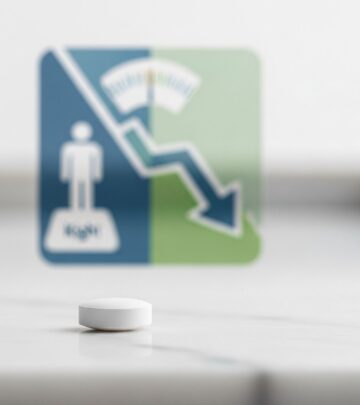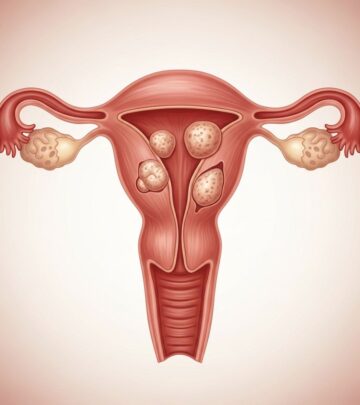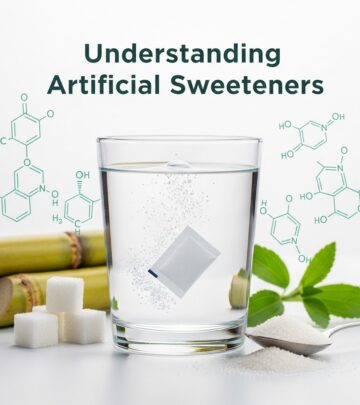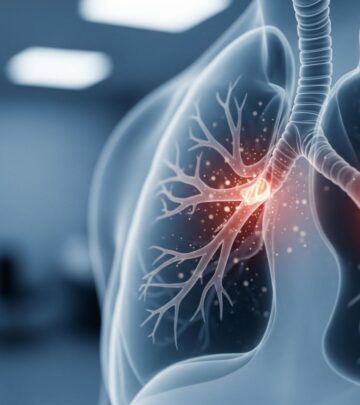Understanding Thirdhand Smoke: Hidden Health Risks Indoors
Explore the hidden dangers of thirdhand smoke, its health effects, and protective steps for a safer environment.

What Is Thirdhand Smoke?
Thirdhand smoke refers to the toxic residues left behind after tobacco products such as cigarettes, cigars, or pipes are smoked indoors. Unlike secondhand smoke, which is the smoke exhaled by a smoker or emitted directly from the burning product, thirdhand smoke is the chemical contamination that settles on everyday surfaces and embeds in household items long after visible smoke dissipates.
These contaminants are found on soft furnishings, clothing, carpets, curtains, toys, walls, and even inside cars. Over time, thirdhand smoke can persist and accumulate, causing prolonged exposure to dangerous substances for anyone spending time in environments where tobacco has been used.
Why Is Thirdhand Smoke a Health Concern?
Thirdhand smoke contains a complex mixture of harmful chemicals, including nicotine, formaldehyde, and naphthalene—all of which have been linked to serious health issues such as cancer and heart disease. Though research on the long-term effects is still ongoing, current studies suggest that even at low levels, these chemicals can:
- Cause genetic damage and mutations.
- Raise the risk of developing cancer, particularly in those with extended or frequent exposure.
- Affect the cardiovascular and respiratory systems.
- Lead to skin problems, such as contact dermatitis and other forms of irritation.
- Contribute to oxidative stress in the body, potentially triggering additional health complications like atherosclerosis.
Notably, the dangers of thirdhand smoke aren’t simply eradicated by opening a window or using an air purifier. These residues cling stubbornly to surfaces and are resistant to routine cleaning, meaning the risk continues even after smoking ceases.
How Does Thirdhand Smoke Accumulate in Indoor Spaces?
The process begins the moment tobacco is burned. Smoke and its compounds absorb into soft and hard surfaces—such as furniture, carpets, walls, and car interiors. Some of these chemicals react further with indoor pollutants like ozone and nitrous acid, increasing their toxicity through the creation of secondary carcinogens such as tobacco-specific nitrosamines (TSNAs). Importantly, these toxins do not simply vanish with time or by routine airing out; instead, they embed deeper with every episode of indoor smoking and become part of house dust.
Children and pets are particularly affected, as they crawl, play, and even place their hands or objects in their mouths, raising the likelihood of absorption through the skin or ingestion. The residual smell can persist for weeks, months, or even years, making indoor environments hazardous long after the last cigarette has been smoked.
The Harmful Components of Thirdhand Smoke
Among the chemicals identified in thirdhand smoke by scientists are:
- Nicotine: The main addictive compound, which acts as a precursor for additional toxins.
- Formaldehyde: A known carcinogen that can irritate airways and membranes.
- Naphthalene: Another cancer-linked substance, commonly associated with the smell of mothballs.
- Pyridine compounds and TSNAs: These arise from chemical reactions with ambient pollutants and are particularly hazardous.
- Polycyclic aromatic hydrocarbons (PAHs): Persistent organic pollutants with established cancer risk.
Research continues to uncover an evolving and diverse array of these byproducts, highlighting their capacity to linger and cause harm far longer than previously understood.
Who Is Most at Risk for Thirdhand Smoke Exposure?
Although anyone in a contaminated environment can be affected, certain groups are far more vulnerable:
- Children and infants: They play on the floor, touch surfaces, and frequently place items in their mouths, making them highly susceptible to residue ingestion or absorption.
- Non-smoking adults: Especially those living with smokers or moving into previously smoked-in homes or vehicles.
- Low-income families: Increased risk arises both from higher smoking rates and from frequently moving into housing with a history of smoking occupancy, sustaining pre-existing contamination.
- Pregnant women and unborn infants: Evidence indicates increased health concerns with any exposure to tobacco toxins.
- Pets: Animals that spend time on the floor or groom themselves can ingest or absorb toxins through their fur and skin.
Health Effects Linked to Thirdhand Smoke
The dangers posed by thirdhand smoke are cumulative and wide-ranging—from subtle cellular damage to potentially life-threatening illnesses:
- Cancer: Carcinogens in thirdhand smoke, such as nitrosamines, are implicated in lung and other cancers.
- Respiratory Illness: Prolonged exposure can contribute to asthma attacks and chronic respiratory problems, especially in children and asthmatic adults.
- Heart Disease: Oxidative stress from these chemicals can set the stage for cardiovascular conditions.
- DNA Damage: Scientific studies show DNA strand breaks and the creation of mutations that elevate long-term health risks.
- Endocrine and Metabolic Disorders: Animal studies have linked exposure to thirdhand smoke with slower wound healing and some markers associated with pre-diabetes.
- Skin Problems: Biomarker increases observed in those exposed can lead to skin diseases such as psoriasis and contact dermatitis.
Why Typical Cleaning Doesn’t Remove Thirdhand Smoke
Many households attempt to address thirdhand smoke residues through conventional means such as opening windows, running fans or air conditioning, and regular cleaning. Unfortunately, these methods are largely ineffective:
- Entrenched Residue: Thirdhand smoke binds deeply into many materials and continues to release toxins over time.
- Limited Reach of Airflow: Increased air circulation does not remove embedded toxins from fabrics or surfaces.
- Resistance to Everyday Cleaning: Common cleaning products and techniques rarely break down the sticky residue or neutralize its harmful compounds. Specialized deep cleaning, renovation, or even replacing furniture, carpets, or wall coverings may be required in some cases.
The most effective protection is to prevent smoking indoors entirely. The removal of all sources of tobacco use from indoor spaces is critical to safeguarding health.
Thirdhand Smoke vs. Secondhand Smoke: A Comparison
| Characteristic | Secondhand Smoke | Thirdhand Smoke |
|---|---|---|
| Definition | Smoke inhaled by non-smokers from the air during and shortly after tobacco use | Residual contamination left on surfaces and dust after the smoke clears |
| Main Exposure Route | Inhalation | Skin contact, ingestion, inhalation of off-gassing compounds |
| Duration in the Environment | Minutes to hours | Weeks, months, or even years |
| Risks | Cancer, heart disease, respiratory illness | DNA damage, cancer, endocrine effects, hard-to-remove contamination |
| Removal | Ventilation and time can dissipate most airborne smoke | Very difficult; may require deep cleaning or replacement |
How Long Does Thirdhand Smoke Linger?
Research indicates that thirdhand smoke can persist for months to years after the last instance of smoking. Even after rigorous cleaning and a period of vacancy, toxic residues can remain in carpets, upholstery, and other hard-to-access places. New tenants or buyers of previously smoked-in homes may still be exposed to harmful compounds unless comprehensive renovation and deep cleaning are performed.
Protecting Yourself and Loved Ones from Thirdhand Smoke
Because thirdhand smoke is both invisible and persistent, precaution is vital. The following steps help minimize exposure and reduce associated risks:
- Establish No-Smoking Policies: Enforce no tobacco use in all indoor areas and vehicles.
- Stay Informed When Moving: Inquire about the tobacco history of new homes, apartments, and cars. If prior use is suspected, consider professional cleaning or replacement of affected materials.
- Protect Vulnerable Groups: Infants, children, pregnant women, and pets should be especially shielded from environments with a history of smoking.
- Support Cessation: Encourage and support quitting smoking; this not only benefits smokers’ health but significantly protects others from involuntary exposure.
- Cleaning and Renovation: When thirdhand smoke is present, deep cleaning, sealed painting, or replacing contaminated furnishings may be necessary for full remediation.
Frequently Asked Questions (FAQs)
Q: Can you smell thirdhand smoke?
A: Sometimes, yes. Thirdhand smoke can leave a stale, lingering tobacco odor that persists even after smoking has stopped. However, damaging chemicals are present even in the absence of any odor, making it an invisible risk.
Q: Is thirdhand smoke less dangerous than secondhand smoke?
A: Both are harmful, but in different ways. While secondhand smoke is more immediately toxic due to airborne chemicals, thirdhand smoke creates a long-term indoor hazard by embedding toxins in household surfaces for months or years, where they can continue causing harm.
Q: Are there any effective methods for removing thirdhand smoke?
A: Standard cleaning (vacuuming, dusting, airing out) is generally not sufficient. Effective removal may require deep cleaning, washing walls and ceilings, replacing carpets and furniture, and in some cases, repainting or remodeling.
Q: How can you tell if your home has thirdhand smoke?
A: There is no easy or immediate way to visually detect these residues. Signs can include persistent odors or knowledge of prior indoor smoking, but comprehensive cleaning or professional evaluation may be necessary for certainty.
Q: How quickly does thirdhand smoke form?
A: Residues start accumulating immediately after each episode of indoor smoking. The more frequently smoking occurs in a location, the higher and more stubborn the contamination becomes, with accompanying risks.
Key Takeaways
- Thirdhand smoke is a lingering and invisible health hazard, introducing carcinogens and toxins into your environment long after smoking stops.
- It is particularly hazardous for children, pets, nonsmokers, and vulnerable individuals.
- No level of indoor smoking is safe. Complete elimination is the only reliable method to safeguard families and homes.
- Rigorous cleaning and home/vehicle policies that prohibit tobacco use are crucial preventive strategies.
For healthier and safer indoor spaces, eliminating tobacco use and thoroughly cleaning contaminated environments is essential.
Read full bio of medha deb












